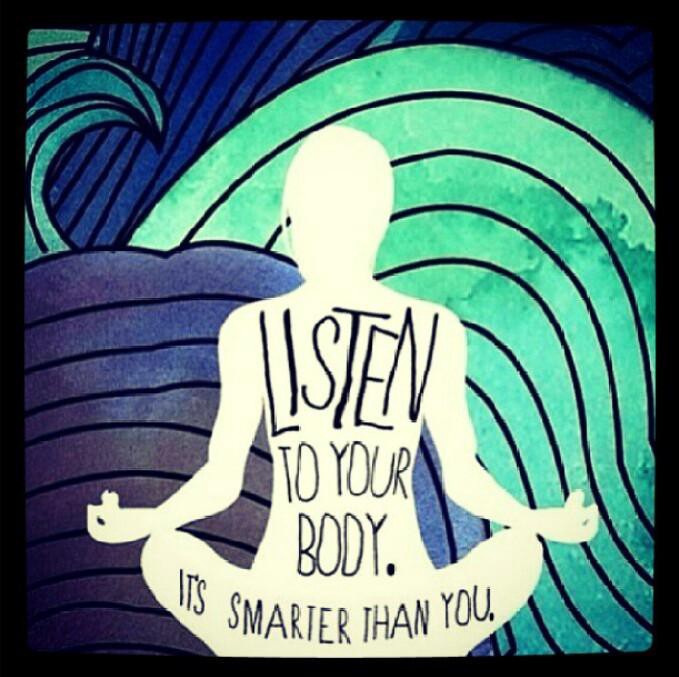
Jaume Gallifa, MBA
Somatic Leadership Strengths
In this post we look deep into how to develop sustainable leadership through the body.

About Somatics and Flourishing
The word « somatic » comes from the Greek word « sōmatikos », which means « of the body ». Thus, somatic means relating to the body or « soma », in Greek, as distinct from the mind, or conscious and unconscious « psyche », in Greek, or « anima », in Latin.
Somatics refers to practices that use body-mind connections to increase bodily awareness, hold on to experiences in the body, and use them as therapeutic methods, as well as to increase resilience, transform and flourishing.
Yoga, breathing, grounding exercises, qi gong, and meditation are somatic exercises. The famous Gatha from Thich Nhat Hanh: « Breathing in, I calm my body. Breathing out, I smile. » is an example of a somatic exercise and ancient meditation method (Nath Hanh, 1990; 2009/2022).
In recent years, evidence has begun to accumulate as to the neurological, endocrine, immune, and psychological impact of these practices, their clinical efficacy, and in some cases their underlying mechanisms (See: Somatic and Bodymind Approaches to Resilience, in Frontiers of Human Neuroscience for a collection of 18 scientific articles exploring this subject).
About Leadership and Self-Leadership
« Leadership is a process of influence for directing behavior toward accomplishing goals. » (Neck, Manz & Houghton, 2020). From a process point of view, leadership is about influence and positive impact.
Leadership is also a universally recognized character strength that can be learned, developed and generated (Peterson & Seligman, 2004; Niemiec & McGrath, 2019).
To lead others, we must first be able to lead ourselves and learn how to effectively utilize shared leadership (Pearce & Manz, 2005). Transposing the leadership definition above with a positive psychology perspective, self-leadership means influencing and directing ourselves to achieve our transformational and flourishing growth intentions. In fact, we all lead ourselves – Not always effectively.
About Character Strengths
After about 5 years of research, Peterson & Seligman (2004) proposed a universal classification of virtues and character strengths, the so-called VIA Classification (VIA meaning Values In Action). In total, 24 strengths of character clustered around 6 virtue categories: wisdom and knowledge, courage, humanity, justice, temperance, and transcendence (Peterson & Park, 2009).
The VIA Institute on Character proposes a character strengths assessment that describes the character strengths profile of the individual surveyed. The VIA Survey provides activities and tips on how and when to use the strengths, so to increase well-being, achieve more at work, in relationships, working through important life changes, or diminish stress (Niemiec, 2019).
Flourishing Strengths
From the very beginning of the positive psychology discipline, Seligman (2002) defined happiness and well-being interchangeably as the goal of the whole new enterprise. Seligman (2011) identified a certain number of well-being components, that he defined under the flourishing construct term, which includes Positive emotions, Engagement, positive Relationships, Meaning, and Accomplishment (PERMA), as well as some of the following components: self-esteem, optimism, resilience, vitality, and self-determination.
Recent research conducted at the University of Zurich shows the relationship between the cultivation of character strengths with mindfulness somatic practices, and the development of the different flourishing components (Wagner et al., 2020).
Psychosomatic Flourishing
Quite recently, a second wave of the positive psychology discipline started to pay attention to the very foundation of the psyche: the body. The point is that, just as the mind can influence the body, the body can have a reciprocal effect on the mind (Hefferon, 2013). This should not come as a surprise to somatics therapy practitioners (Payne, Levine & Crane-Godreau, 2015), and those knowledgeable of the ancient Buddhist Psychology (Nath Hanh, 2006), for whom body and mind are not two separate entities and Zen practitioners.
Leadership Strengths
Leadership literature speaks about many qualities, or strengths, that make a difference in the new age of human organizations. According to leadership scholarship, successful and sustainable leaders should:
- Be grounded (Rosen, 2013) and humble (Schein & Schein, 2018/2022),
- Navigate through challenges with resilience, guiding others through change with courage and conviction, so organizations do not only have the capacity to endure but get stronger (Southwick et al., 2017),
- Be able to mobilize, focus, and sustain positive energy in oneself and others (Cameron, 2018),
- Show compassionated wisdom, humanity, and presence (West, 2021),
- Be authentic with purpose and passion, values and behaviors, heart and compassion, relationships and connections, as well as self-discipline and consistency (George, 2003),
- Develop emotional intelligence with integrative self-awareness, social and system awareness for gathering information, developing insight, and thereby facilitating well-being and adaptation, strategic solution focus with self-regulation, and positive outlook (Goleman et al., 2003/2013), and
- Promoting creativity and offering vision and perspective (Barrett, 1998).
Embodied Leadership Strengths
Embodiment has different dimensions: perceived body sensations, or interoception, attention quality, attitude, and integration (Mehling et al., 2009). Somatic practices develop the ability to integrate body emotions, attention, and social awareness (Siegel, 2010), which are the very foundation of all leadership competencies (Goleman et al., 2013). In other words, leadership can only be embodied.
In fact, each cell of our body has a great deal of leadership. Individual cells scale their humble homeostatic competencies toward remarkable examples of problem-solving, goal and solution orientation, memory, creativity, agency, communication, and collaboration capabilities (Lagasse & Levin, 2023).
Our bodies have ways of expressing energy, sensations, emotions, movement, vibrations, impulses, and volition. These expressions are conditioned, often manifesting unconscious reaction tendencies (e.g., shrinker, defender, intellectual, activist), that eventually are rationalized (Strozzi-Heckler, 1984/1997; 2014).
Like Strozzi-Heckler, van der Kolk (2015) and others (Walsh, 2021) have shown, not only how to be with the body, but also how to work through the body.
Thus, the following question: can we develop leadership competencies through the body to discover who we are, and how to develop leadership qualities, in life? Can we generate grounded attention and focus, humility, resilience, energy, compassion, authenticity, emotional intelligence, and perspective through the body? Could somatics be a path for transformation, flourishing, and sustainable leadership? This is the topic of our next Flourishing Circle gathering.
- Barrett, Richard (1998). Liberating the Corporate Soul: Building a visionary organization.
- Cameron, Kim (2018). Positively Energizing Leadership: Virtuous Actions and Relationships That Create High Performance.
- George, Bill (2003). Authentic Leadership. Rediscovering the Secrets to Creating Lasting Value.
- Goleman, Daniel, Boyatzis, Richard & McKee, Annie (2003/2013). Primal Leadership: Unleashing the Power of Emotional Intelligence.
- Goleman, Daniel et al. (2013). Building Blocks of Emotional Intelligence: 12 Leadership Competency Primers.
- Hefferon, Kate (2013). Positive Psychology and the Body: The Somatopsychic Side to Flourishing.
- Lagasse, Eric & Levin, Michael (2023). Future medicine: from molecular pathways to the collective intelligence of the body. Trends in Molecular Medicine, September 2023, Vol. 29, No. 9.
- Mehling WE, Gopisetty V, Daubenmier J, Price CJ, Hecht FM, et al. (2009). Body Awareness: Construct and Self-Report Measures. PLoS ONE 4(5): e5614.
- Neck, Christopher P., Manz, Charles C., & Houghton, Jeffrey D. (2020). Self-Leadership: The Definitive Guide to Personal Excellence. Second edition.
- Nhat Hanh, Thich (1990). Breathe, You Are Alive, The Sutra on the Full Awareness of Breathing.
- Nhat Hanh, Thich (2006). Understanding Our Mind: Fifty Verses on Buddhist Psychology.
- Nhat Hanh, Thich (2009/2022). The Blooming of a Lotus: Essential Guided Meditations for Mindfulness, Healing, and Transformation (Revised and expanded edition).
- Niemiec, Ryan M. (2019). The Strengths-Based Workbook for Stress Relief: A Character Strengths Approach to Finding Calm in the Chaos of Daily Life.
- Niemiec, Ryan M. & McGrath, Robert E. (2019). The Power of Character Strengths. Appreciate and Ignite Your Positive Personality.
- Payne, Peter; Levine, Peter A. & Crane-Godreau, Mardi A. (2015). Somatic experiencing: using interoception and proprioception as core elements of trauma therapy. Frontiers in Psychology, Vol. 6.
- Pearce, Craig L. & Manz, Charles C. (2005). The New Silver Bullets of Leadership: The Importance of Self and Shared Leadership in Knowledge Work. Organizational Dynamics, 34(2): 130-140.
- Peterson, Christopher & Park, Nansook (2009). Classifying and Measuring Strengths of Character. The Oxford Handbook of Positive Psychology. Second Edition.
- Peterson, Christopher & Seligman, Martin (2004). Character Strengths and Virtues: A Handbook and Classification.
- Rosen, Bob (2013). Grounded: How Leaders Stay Rooted in an Uncertain World.
- Schein, Edgar H. & Schein, Peter A. (2018/2022). Humble Leadership: The Power of Relationships, Openness, and Trust. Second Edition.
- Seligman, Martin (2002). Authentic Happiness: Using the new positive psychology to realize your potential for lasting fulfillment.
- Seligman, Martin (2011). Flourish: A Visionary New Understanding of Happiness and Well-being.
- Siegel, D. J. (2010). Mindsight: The new science of personal transformation.
- Southwick, Frederick & Martini, Brenda & Charney, Dennis & Southwick, Steven. (2017). Leadership and Resilience, in J. Marques, S. Dhiman (eds.), Leadership Today.
- Strozzi-Heckler, Richard (1984/1993). The Anatomy of Change: A Way to Move Through Life’s Transitions. Second Edition.
- Strozzi-Heckler, Richard (2014). The Art of Somatic Coaching: Embodying Skillful Action, Wisdom, and Compassion.
- van der Kolk, Bessel (2015). The Body Keeps the Score. Brain, Mind, and Body in the Healing of Trauma.
- Wagner, Lisa; Gander, Fabien; Proyer, René. T.; Ruch, Willibald (2020). Character Strengths and PERMA : Investigating the Relationships of Character Strengths with a Multidimensional Framework of Well-Being. Applied Research Quality Life 15(2):307–328.
- Walsh, Mark (2021). The Body in Coaching and Training: An introduction to embodied facilitation.
- West, Michael A. (2021). Compassionate Leadership: Sustaining Wisdom, Humanity and Presence in Health and Social Care.


